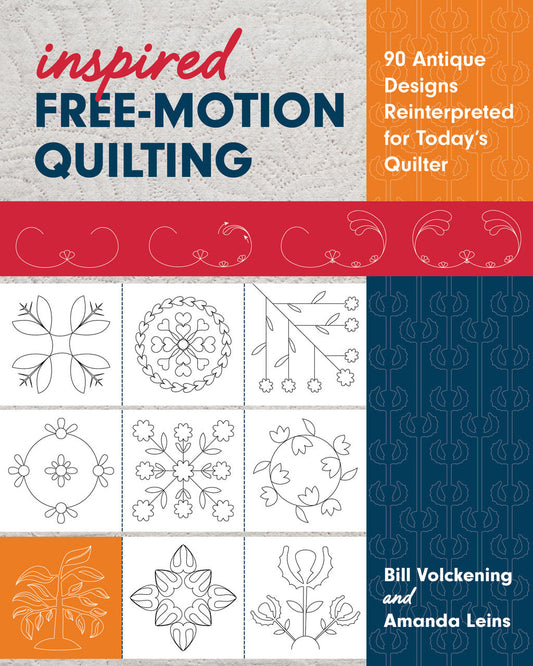
Myth-Busting: Skin Tones in Art Quilts
Share
Please welcome Leni Levenson Wiener, world-renowned art quilter and author of Pictorial Art Quilt Guidebook to the blog for today's National Sewing Month post!
As I am a figurative art quilter, I often look for fabric I can use to depict skin tones. When I teach workshops or receive emails from readers of my book, many have misconceptions about choosing the appropriate fabrics for skin tones. Here are five myths I would like to address regarding using “skin-toned” fabric.
Myth #1 Skin is pink
Most students come to portrait or figurative workshops with a stack of pinkish fabrics, thinking that is the color of human skin. The truth is, skin is almost never a pink tone; it is more often neutral beige. In fact, although ethnicity changes the values of skin tones, they almost always remain in the neutral range.

Myth #2 All beige fabrics work together
Beige fabrics are not always “neutral” and can differ in color. Think back to kindergarten when you got your hands in the finger paint and learned the basics about color mixing (red and yellow make orange, blue and yellow make green, etc). Remember what happened when all the colors got swirled together—brown. Brown is a combination of all three primaries together—red, blue, and yellow. Mixed together in equal amounts, you get a nice neutral brown. Add white to that mix, and you get neutral beige. But add more of one color to the original mix and you get a brown that has an undertone of green, yellow, red, or blue. Sounds complicated. But lay all your beige fabric out on a table and you can tell immediately if one of your beige fabrics is different from the others; when that happens, remove it from those you are considering.
Myth #3 Color is more important than value
Value is the relative light, medium, and dark elements of the fabrics used in any quilting project. In an art quilt, it is important that those relative light, medium, and dark fabrics remain true to those in your original photo, regardless of whether you are using natural skin tones. It is the value, not the color, that will define and shape your fabric face and give it contour and dimension.

Myth #4 Printing your photo in black and white is a good way to determine value
Unless you are using a very high quality professional printer at a high-resolution setting you will not see the subtleties between values that might even be perceived by eye. In addition, where one color blends into another (say, for example, dark brown hair resting on a navy shirt), you will not be able to determine where one color ends and the other begins. That is why I developed the Gray Scale Value Card. Put the card next to the area in your photo you wish to match, make note of the closest gray value number and then take the card to your fabrics to find the one that is closest to that value number. This is much easier than using red-toned viewers that mask colors to show value (those will tell you which is the darker value but not which one matches the value you need). Visit http://leniwiener.com/art-quilters-value-card for more information on the Gray Scale Value Card .
Myth #5 Solid fabrics are best for skin tones
In fact, solid fabrics are the hardest way to approach skin tones in fabric. Personally, I think adding unexpected print and pattern is what elevates a photo to artwork and makes it much more visually interesting than simply a fabric depiction of the photo—and that has become a hallmark of my work. Even the density of the print can change its perceived value, giving you lots of wonderful options. But more importantly, unless you are doing your own fabric dying, it is very difficult to find all the values of neutral beige in solid fabrics in your local quilt shop. What you are more likely to find are a few neutrals, some pink, some taupe, and some that are closer to khaki.

I am often asked if I purchase my fabrics online, and I do not. The way a fabric looks on the computer screen is always just a little different than the way it looks in person. Buying the fabric in a store–if you are lucky enough to be close to a quilt shop or quilt show–means you can evaluate and lay out the fabrics before you buy them and know exactly how they will work together. I particularly like buying fat quarters of Civil War-reproduction fabrics, as many are neutral beige with a small-scale pattern. I purchase lots of beige tones when I see them so that when I start a new art quilt, I have lots of options in my stash (already arranged for me by the value numbers on the gray scale value card).
With these myths debunked, you should have an easier time finding the right fabric for your next figurative or portrait quilt.
Leni Levenson Wiener is the author of Pictorial Art Quilt Guidebook and her work is in many art exhibitions around the world. Her solo show entitled “Park Bench Stories” can be seen until September 25 at the Grants Pass Museum of Art in Grants Pass, Oregon. Please visit her website www.leniwiener.com. And for the next week, you can enter to win a free copy of her book here: a Rafflecopter giveaway! Winner will be announced one week from today; US winner will receive physical copy and international winner will receive ebook.
Congratulations to Sarah, winner of this giveaway! Sarah, we hope you enjoy learning more art quilt techniques, and thank you to everyone else who entered! We hope you enjoyed this art quilt myth busting.












